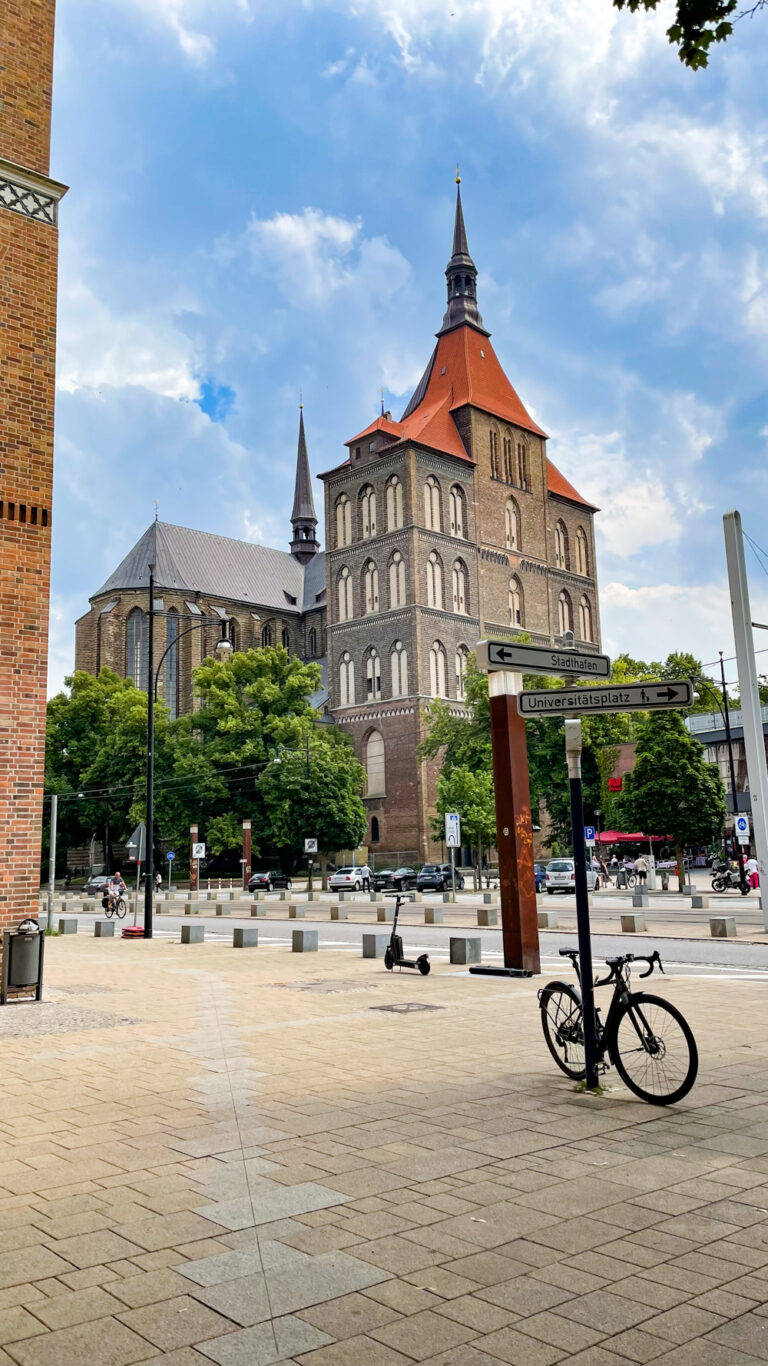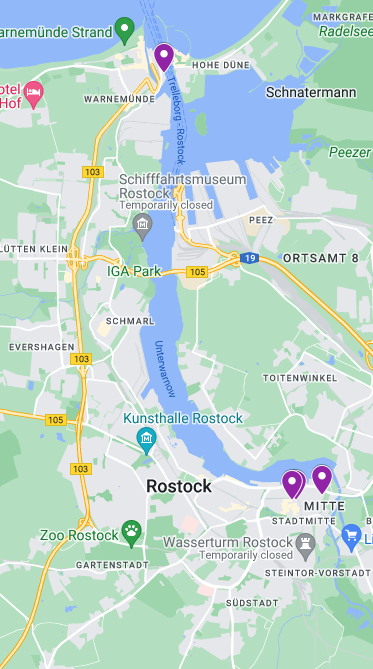
Warnemünde , Germany
Monday, June 27th we docked in Warnemünde, Germany. Another favorite stop for us.
Warnemünde (mouth of the Warnow) is a seaside resort and a district of the city of Rostock in Mecklenburg, Germany. Founded in about 1200, Warnemünde was for centuries a small fishing village with minor importance. In 1323 Warnemünde was purchased by the city of Rostock in order to safeguard the city’s access to the Baltic Sea. It was in the 19th century that Warnemünde began to develop into an important seaside resort. Warnemünde has approximately 8,400 inhabitants. It is one of the world’s busiest cruise ports.
We got many photos while cruising into the bay and later got off the ship and strolled along the dockside area, where we enjoyed seeing a cute area called Karls Erlebnis-Dorf (Karls Adventure Village). The shop had lots of strawberry trinkets and food stuffs. It was an area that had three awesome sand sculptures.
The train tracks from the Warnemünde station ran parallel to the cruise port and many folks on the ship took the three hour train ride into Berlin, Germany.
We decided not to do that and just got off the ship about 10:00 a.m. and checked out options. We decided to take the city site-seeing Rostock bus into Rostock, which was about a 30 minute bus ride from the ship.
After returning to the ship, we relaxed and spent time on our balcony. The weather was very comfortable and the balcony was in the shade this time of the day. After a couple of naps we had an early dinner and came back to our room and enjoyed a spectacular thunder and lightening storm from our balcony.
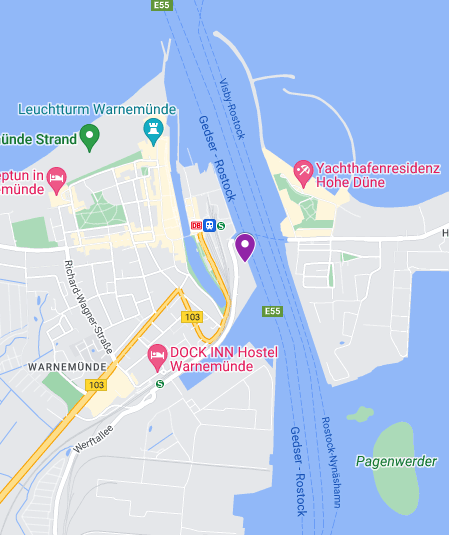
Warnemünde Photos
Rostock, Germany
Our excursion left about 11:00 a.m. and stopped at Saint Peters Church before driving around a biting Rostock and ending at St. Mary’s Church downtown.
We were then free to explore for a couple of hours on our own. We stopped at a little restaurant “Old Western” right next door to St. Mary’s and had some snacks, a beer local beer for John and Coke for me.
Funny thing, there was a sign post right near Saint Mary’s Church that had the distance to a variety of cities. One of them was Raleigh. We live in Apex, NC, a suburb of Raleigh.
We then went into Saint Mary’s Church where John wanted to see the astronomical clock that is housed in the church. We then walked around Rostock city center where we saw centuries old red brick architecture and the cute little town in the Market Square. We stopped at a couple of shops and bought a few things before returning to the bus to bring us back to the ship about 3:00 p.m.
Warnemünde and Rostock are located in the old East Germany (GDR). St. Peters Church, which we visited during our visit was bombed during WWII and later rebuilt. There are many buildings that were built during the East Germany period.
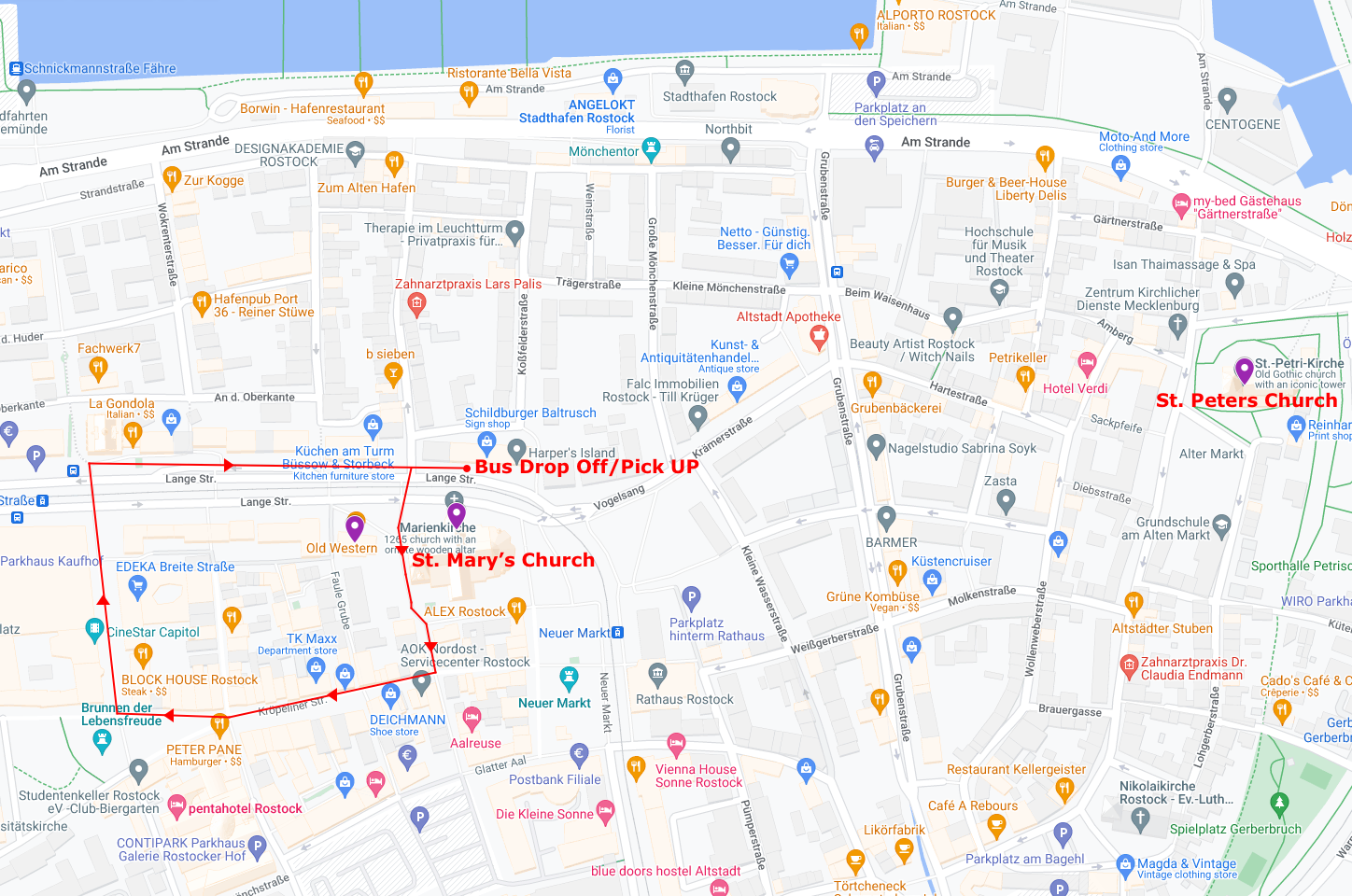
Rostock Photos
St. Peters Church
St. Peter’s Church, in German Petrikirche, was built in the. 13th century and is the oldest of three town churches found in the city of Rostock. The first reference to a church on this site is in 1252, which is thought to be the predecessor of the current building. The triple-nave basilica is in Brick Gothic, a building style typical of the Hanseatic port cities of northern Germany.
The existing church has a tower 413 feet high, which was destroyed by a thunderbolt in 1543. In 1578 the tower was rebuilt as a polygonal spire after it had been, once again, damaged by storm. With a height of 380 feet, the tower served as a landmark in the local area. After the Protestant Reformation, the church was used by a Lutheran congregation.
In the following centuries the church decayed, and in 1902 the Basilica was renovated. Forty years later, however, heavy bombing during WWII again damaged the church and led to the collapse of the polygonal spire. Following the war, the building was gradually rebuilt. Today the church, roofed by a flat timber ceiling, reaches a height of 78 feet. In 1994 a glass window in the choir was built to a height of 55 feet. Public donations funded the building of a copper polygonal spire. With this, St. Peter’s once again became a visible landmark in the surrounding area. Additionally, a 146 feet observation platform (accessed via steps and an elevator) provides line views of the city of Rostock and the Baltic Sea.
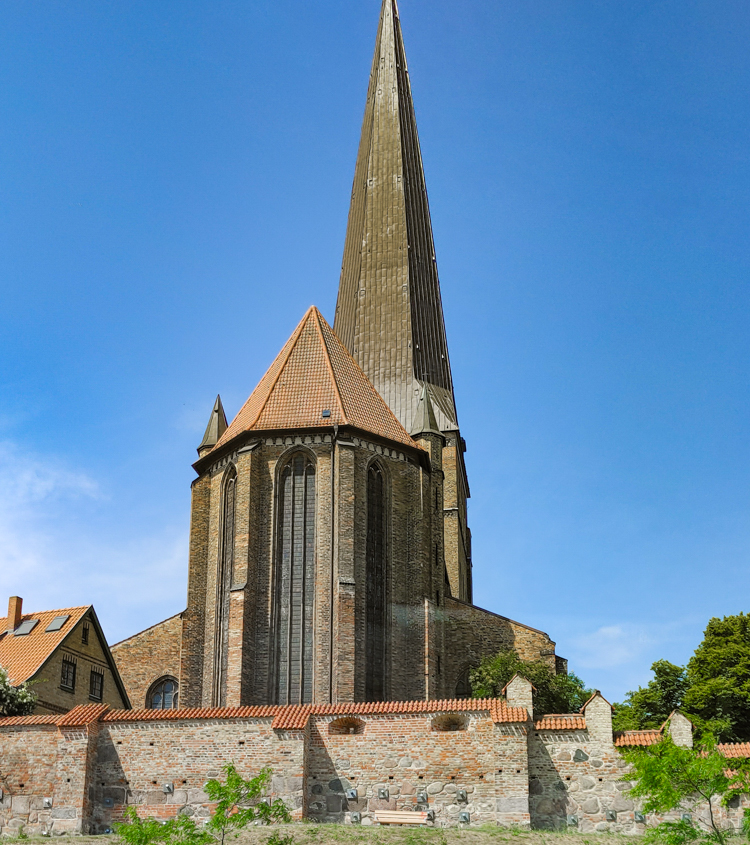
St. Peters Church Photos
St. Marys Church
St. Mary’s Church, in German Marienkirche, is the biggest of three town churches found in the city of Rostock, in northern Germany. St. Mary’s was designated in 1265 as the main parish church. Since the Protestant Reformation in 1531, it houses a congregation of the evangelical Lutheran State Church of Mechlenburg.
St. Marys Church is a large Brick Gothic, a building style typical of the Hanseatic port cities of northern Germany. The huge tower with a baroque lantern at the top was not completed until the end of the 18th century. The high altar was built in 1721 by a Berlin craftsman, mainly from painted wood.
The monumental south portal window of the transept with a height of 85 feet shows the Day of Judgement. It is one of the largest single stained-glass windows in Europe and was made by “Tyrolean Stained Glass Innsbruck” from 1894 until 1904. It survived WWII in various states of disrepair. It was thoroughly restored between 2003 and 2008 by a Mecklenburgean master from Dresden, and equipped with a protective glazing.
Astronomical Clock:
This was the reason John wanted to visit Rostock…to see this amazing clock. The astronomical clock was built in 1472 by Hans Düringer, a clock maker from Nuremberg. It consists of three partitions:
- Top: Apostle-go-round giving an hourly performance of the apostles crossing before Jesus for a blessing before entry into eternal bliss, and the last, Judas, is shut out.
- Middle: Clock with daily time, zodiac, sun phases, and month.
- Bottom: Calendar, which is valid until 2150 (with beginning of 2018 this table replaced the 4th, which lasted from 1885 to 2017.)
–
The medieval clock is the only one of its kind still in working condition with its original clockworks.
